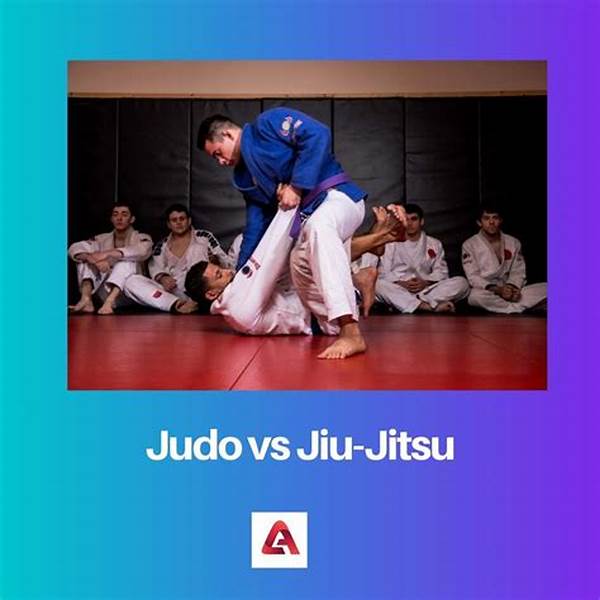Differences In Judo And Jujitsu

Welcome, dear reader, to a thrilling exploration of two martial arts that have grabbed the world’s attention and curiosity! Who hasn’t dreamed of mastering the art of self-defense while cultivating discipline, respect, and a healthier lifestyle? Dive into the mesmerizing world of martial arts with us as we unravel the differences in judo and jujitsu. From mat warriors to intrigued observers, there’s something for every unique mind, and by the end of this article, you might just feel inspired to throw on a gi and step onto the tatami!
Read More : Sports Direct Offers Savings On The Latest Hiking Equipment
Have you ever felt a rush watching martial artists throw each other around with grace and ease? Have you found yourself pondering, what’s the real deal between judo and jujitsu? As much as they share a common lineage and aesthetics that look like poetic duels, these two martial arts each boast their distinctive flavors. Like two branches of a rich, traditional tree, judo and jujitsu offer distinct pathways to empowerment, fitness, and, yes, awesome fight scenes. Let’s break it down and feature the captivating differences in judo and jujitsu.
Understanding the Roots of Judo and Jujitsu
Before diving into the deeper differences, it’s important to understand the roots of both martial arts. Both judo and jujitsu stem from ancient Japanese combat systems. While jujitsu is known for its versatility in both armed and unarmed combat techniques, it primarily focuses on joint locks and throws that allow one to defeat an opponent efficiently. It’s an art that combines finesse with strategy, often described as a chess game of the martial world.
On the other hand, judo, which translates to “the gentle way,” was developed as a modern form of jujitsu. Founded by Jigoro Kano in the late 19th century, judo focuses on throwing and grappling techniques, emphasizing leverage over power. Kano’s vision was to transform judo into not just a self-defense system, but a physical and moral education that emphasizes respect, discipline, and humility.
Core Techniques: Throws vs. Groundwork
When discussing the differences in judo and jujitsu, core techniques are an essential part of the conversation. In judo, the highlight is often on nage-waza (throwing techniques). The objective is to skillfully use an opponent’s force against them, enabling a smaller individual to overcome a larger opponent. Judo matches often see practitioners attempting spectacular throws, delighting spectators with their dramatic flair.
Conversely, jujitsu’s focus extends beyond just throws. Known for its vast repertoire of techniques, it encompasses nage-waza (throws), kansetsu-waza (joint locks), and shime-waza (chokeholds). Jujitsu practitioners excel in close combat and groundwork, mastering how to neutralize an opponent either standing or on the ground. It marries patience with precision, where the game can shift quickly from throws to intricate joint locks in seconds.
Cultural Influence and Global Reach
Both martial arts have made significant cultural impacts globally. Judo, recognized as an Olympic sport, has spread around the world and has been integrated into various cultures as both a competitive sport and a tool for personal development. It appeals to those who wish to compete at international levels and teaches values that transcend the dojo.
Jujitsu, particularly Brazilian Jiu-Jitsu (BJJ), gained massive popularity through mixed martial arts (MMA) competitions and the UFC. It has been celebrated as an extremely effective martial art in self-defense scenarios and has a devoted following among those who favor ground combat skills.
The Practical Application of Judo and Jujitsu
Judo: More Than Just a Sport
Judo isn’t merely a sport; it’s a philosophy and a lifestyle. It isn’t only about winning or losing in a competition; it’s about improving oneself, both mentally and physically. Practitioners learn respect, patience, and the power of resilience. Many judo enthusiasts carry these principles into daily life, finding that it enriches their personal and professional relationships.
Read More : Sky Sports Presents This Week’s Exclusive Premier League Broadcast Schedule
Jujitsu: A Tactical Approach to Self-Defense
Jujitsu, especially BJJ, is often seen as the ideal martial art for real-world self-defense, primarily due to its focus on controlling opponents through holds and locks rather than strikes. This art requires studying techniques that deal with common street confrontations, making it applicable for a wide range of real-life situations.
Analyzing the Techniques in Depth
The Essence of Differences in Judo and Jujitsu
The heart of the differences in judo and jujitsu lies in their approach to martial art and sport. Judo, with its Olympic spirit, is tailored towards structured competition and self-improvement. It emphasizes throw techniques and fosters a strong community from dojo to international competition levels.
Jujitsu, however, often attracts those who revel in the art of submission and precision control. Its focus on realistic self-defense and adaptable groundwork tactics makes it a favorite among MMA fighters and those seeking practical defense skills.
Both martial arts offer rich and rewarding journeys for enthusiasts, whether they’re seeking competition, fitness, self-defense, or mental discipline. Are you inspired to start throwing and rolling? Perhaps it’s time to embrace the dojo experience and discover the art form that resonates most with your personal goals and expressions.
Conclusion
Exploring the differences in judo and jujitsu reveals not only the technical distinctions but also highlights their philosophical and global impacts. Both practices offer tools for physical mastery, mental growth, and self-discipline. They engage diverse communities worldwide and cater to varied personal values and goals. Whether you lean towards the enigmatic throws of judo or the strategic ground tactics of jujitsu, embracing either (or both!) presents an enriching martial journey. You’re now armed with knowledge—maybe you’ll soon find yourself joining the ranks of martial artists around the globe!



